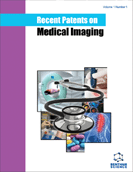Abstract
Integration of imaging data with immunohistology is a new art. Increased PET and MRI image intensities on rat breast tumor MRI-PET images were reviewed for possible correlation with tumor histology and MALDI imaging tumor characteristics in the light of recent inventions and patents. Increased signal intensities of intracellular (IC) sodium μMRI and flouro-2-deoxy-glucose utilization by μPET from apoptosis protein rich MALDI visible regions of tumors were positively correlated to chemosensitivity of Taxotere. MCF-7 cancer cell line induced rat tumor MRI-PET images and histology digital images were compared for correlation in pre- and post taxotere treated tumors. For MALDI imaging, iterated protein ion mass spectrometry peak analysis was done using data from laser raster over tumor slices in sequence and 3D tumor volume was simulated for specific peak(s) distribution. A criterion was developed to evaluate malignancy by histology and MRI-PET imaging. For correlation, regression analysis was done using MRI-PET imaging, histology and MALDI imaging data from MCF-7 tumor after 24 hours post-taxotere treatment. Apoptosis indices were calculated by histostaining using pentachrome, feulgen and ss-DNA antibody assay. Review showed sodium MRI and PET signal intensity distribution comparable and measurable in tumor tissue regions. In tumors, taxotere induced an increase in IC-Na MRI signal with decreased tumor size and micro-PET showed FDG uptake increase with decreased tumor size than that of control tumors after 24 hours. Histology features indicated tumor risk (high ‘IC/EC ratio’, high mitotic index and apoptotic index), decreased tumor viability (reduced mitotic figures, reduced diploidy or aneuploidy and proliferation index) after Taxotere treatment. These features in co-registered IC-Na, μPET hypermetabolic and monoclonal antibody (ss-DNA) sensitive regions showed 6% difference. MALDI imaging showed tumor specific protein ion species and their distribution showed empirical correlation (limited visual match) with MRI-PET signal intensities but comparable match with histology features. Recent patents strongly suggest the possibility of sodium MRI and PET multimodal imaging integrated with MALDI-imaging as an non-invasive chemosensitivity assay to monitor the anticancer effect.
Keywords: MRI and PET integration with MALDI, apoptosis index, prostate tumor, validation, MALDI imaging, texotere chemosensitivity, Magnetic resonance imaging, microimaging multimodal technique, multimodal molecular imaging tool, real-time fast imaging technique, MASCOT software, field-of-view, iterative closest point (ICP) algorithm, magnetic resonance volume, convergence optimization
 3
3

